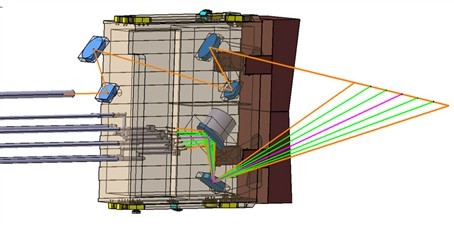F4E works with Danish and Portuguese European Fusion Laboratories to design diagnostic system for ITER


F4E and a consortium comprising the Danish and Portuguese Research Units (DTU and IST-IPFN) have signed a Framework Partnership Agreement (FPA) for the development and design of the Collective Thomson Scattering diagnostic system for ITER. The contract will run for the next four years.
The Collective Thomson Scattering (CTS) diagnostic system will monitor the behaviour of the fast ions, that is to say, how the speed of the fast ions is evolving within the ITER plasma.The CTS system will measure 7 locations within the ITER plasma. Fast ions are elusive particles which are a natural consequence of the fusion process and plasma heating techniques. Although they represent less than five percent of plasma density, fast ions carry up to one-third of the plasma’s kinetic energy. Optimising their confinement within the plasma is important as they play a major part in sustaining the high plasma temperatures required for the fusion reaction as they collide with and transfer their energy to ‘bulk’ particles in the plasma. However, fast ions are somewhat problematic as they behave unpredictably: some remain in the magnetic field, others escape the plasma and reduce confinement, or amplify plasma disturbances.
Confined fast ions have previously eluded experimental observation as traditional laser diagnostic techniques have not been able to capture these heavier ions. The CTS diagnostic system involves a different approach as rather than focusing on the individual particle, measurements focus on the collective motion of the whole group. CTS takes advantage of the fact that fast ions leave a wake as they travel through a cloud of electrons. Although the ions are themselves near impossible to monitor, their wakes are detected through the CTS technology.
The CTS diagnostic system will consist of mirrors and antennas integrated in the Equatorial Port Plug 12 of the ITER machine. The upper antenna and mirrors will launch a powerful, single and high frequency microwave beam (1 MW at 60 GHz, equivalent to 1,000 microwave ovens at full power) into the plasma and records the scattered electromagnetic waves through the lower mirrors and receiver antennas. The measurement enables establishing the dynamics and distribution of the ions in the plasma – especially the fast ions from the fusion processes.